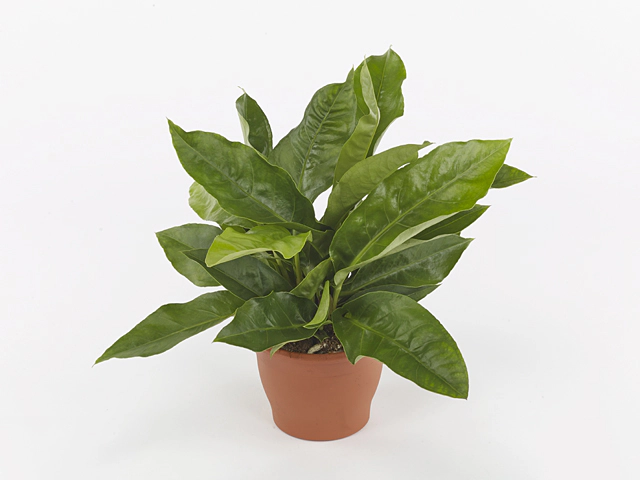Anthurium not flowering crassinervium Karrma Urban

| Leaf tip | Mucronate |
| Leaf margin | Undulate; Entire |
| Leaf, general shape | Elongate |
| Leaf, scent | Unscented |
| Leaf width | 10 - 15 cm |
| Leaf surface | Smooth; Glossy |
| Leaf size | 25 - 30 cm |
| Leaf division | Simple |
| Leaf, main color | Green-dark brown green-147A |
| Leaf colour, pattern | Unicolored |
Anthurium plants are popular for their beautiful and vibrant flowers. However, if you have an Anthurium crassinervium Karrma Urban, commonly known as the Flamingo Plant, that is not flowering, there could be several reasons behind it.
One of the key factors to consider is the plant's leaf characteristics. The Flamingo Plant has elongated leaves with a width of 10-15 cm. The leaf tips are mucronate, giving them a pointed appearance. The leaf margins are undulate, which means they have a wavy or uneven edge. The leaves of the Flamingo Plant are smooth and glossy, providing a striking visual appeal. They are typically green, with hints of dark brown-green, as indicated by the color code 147A.
While the appearance of the leaves contributes to the overall beauty of the plant, the main focus is on the flowering process. As mentioned earlier, if your Anthurium crassinervium Karrma Urban is not flowering, there could be several reasons for this.
One possibility is that the plant is not receiving adequate sunlight. Anthurium plants thrive in bright but indirect light conditions. If the plant is placed in a location with insufficient light, its ability to produce flowers may be hindered. Consider moving the plant to a spot where it can receive ample indirect sunlight.
Another factor to consider is the plant's age. Anthurium plants typically start flowering when they reach maturity, which can take several years. If your Flamingo Plant is relatively young, be patient and provide it with the necessary care and attention. Over time, it should begin to produce flowers.
Proper watering is also crucial for Anthurium plants. These plants prefer a moist but not overly wet environment. Ensure that you are watering your plant appropriately, allowing the soil to partially dry out between waterings. Overwatering can lead to root rot and inhibit the flowering process.
Additionally, feeding your Anthurium plant with a balanced fertilizer can promote flower production. Use a fertilizer specifically formulated for flowering plants and follow the instructions on the packaging. Be cautious not to overfertilize, as this can cause damage to the plant.
Flowering can also be influenced by the temperature and humidity levels. Anthurium plants prefer warm temperatures ranging from 60-85°F (15-29°C) and high humidity levels. If your home or the area where the plant is located is too cold or dry, it may affect its ability to bloom. Consider placing the plant in a more suitable location or using a humidifier to increase moisture levels.
In conclusion, if your Anthurium crassinervium Karrma Urban, or Flamingo Plant, is not flowering, it is essential to consider factors such as sunlight, age, watering, fertilizing, and temperature/humidity levels. By providing the plant with the optimal growing conditions and proper care, you can encourage it to produce its stunning and characteristic flowers.